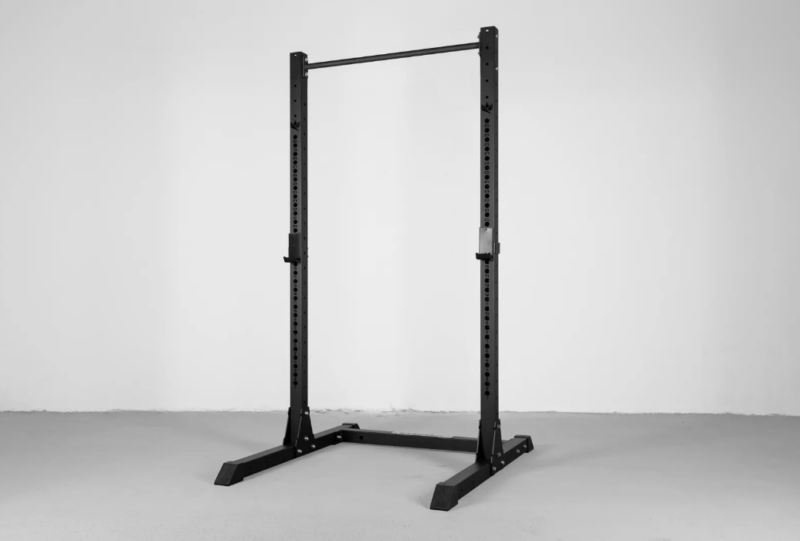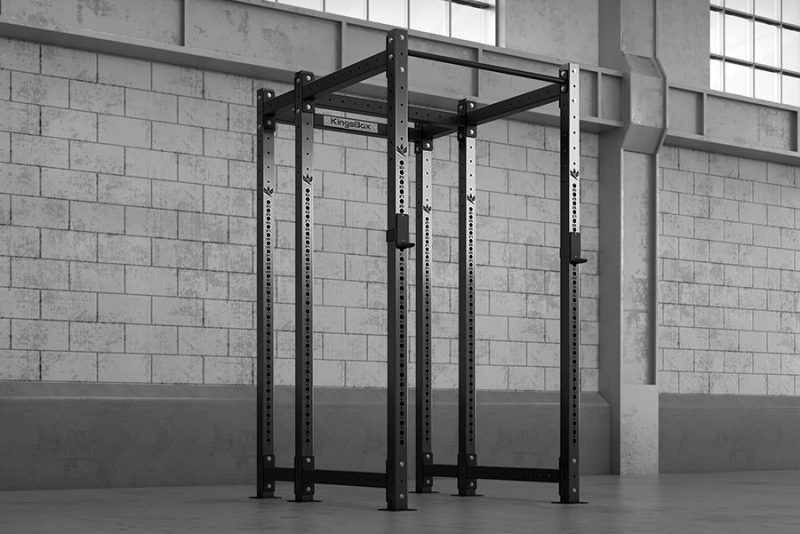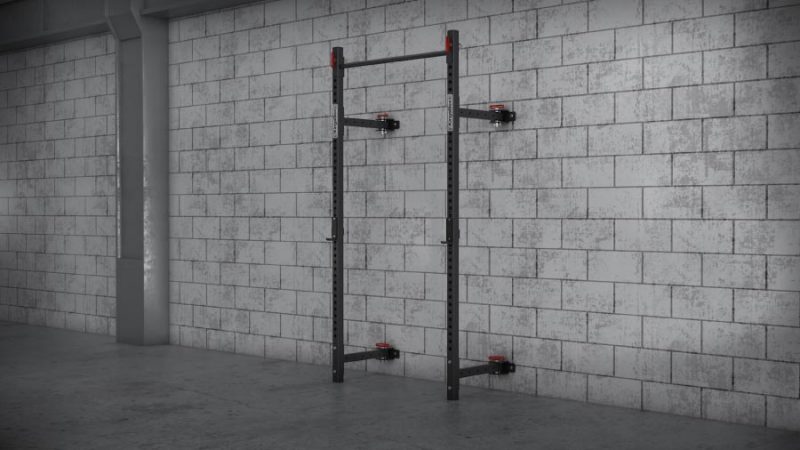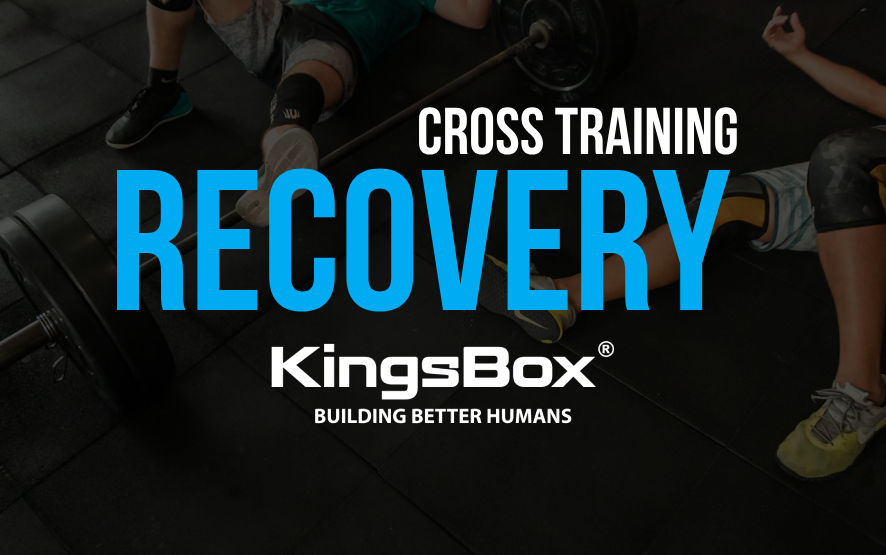Squat is one of the most effective exercises to train the lower limbs and the entire muscle chain. This compound movement involves the muscles of the legs, buttocks and core, and is crucial in many training programs. In this article, we will explore the benefits of squat, the correct technique of execution and some variants that you can try and especially which rack saw to train properly.
But before starting a little history on this so famous movement
Indice dei contenuti
Who invented squat?
Squat is a physical exercise that has ancient roots and cannot be attributed to a single inventor. It is a natural movement of the human body that involves flexion of the joints of the knees and hip. The act of squatting is a common position in many cultures and has been practiced for centuries for different purposes, such as working in the fields, resting or performing traditional rituals.
In the context of modern training, squat has become a widely used exercise and used to develop muscle strength and hypertrophy. In recent history, exercise has been popularized by weightlifters, bodybuilders, and athletes of various disciplines. There is not a single individual who can be credited as the inventor of squat in the context of modern training.
However, it is important to note that the correct execution of the squat, with emphasis on technique and safety, has been developed and spread by fitness experts, training professionals and athletes over the years. Training methodologies and guidelines for the safe execution of squats have been studied and developed in the field of weight training and sports science.
In what sports disciplines do you squat
Squat is a very common exercise and is used in various sports. Here are some of the disciplines in which squat is commonly practiced:
-
- Weightlifting: Squat is one of the three basic movements in Olympic weightlifting. Athletes lift heavyweights in squats to improve leg strength and explosive power.
- Bodybuilding: Squats are a key exercise for the development of legs and buttocks in bodybuilding. Bodybuilding athletes use them to increase muscle mass and definition in the lower body.
- Powerlifting: In powerlifting, squat is one of the main exercises along with bench press and deadlift. Athletes compete in maximum weight lifting in squats.
- Athletics: Squats are often used by athletics athletes to improve leg strength and the explosive power needed for disciplines such as high jump, triple jump and weight throw.
- Team sports: Many team sports, such as football, rugby and basketball, require strength and power in the legs. Squats are included in training programs to improve athletic performance.
- General fitness: Squat is widely used in general fitness and functional workouts. It is an effective exercise to develop leg strength, improve balance and burn calories.
Versatile and beneficial exercise for muscle building and athletic performance is often included in training programs of different disciplines.
1. Benefits of squat:
Squats offer numerous benefits for your body and your overall health. Some of the main benefits include:
Increased strength of the legs and buttocks
Improvement of balance and stability
Involvement of different muscle groups simultaneously
Stimulation of growth hormone production
Increased metabolism and ability to burn calories
Bone enhancement and improvement of bone mineral density
Improved posture and joint mobility
2. Correct squat technique:
Proper squat technique is essential to maximize results and prevent injuries. Here are the basic steps to perform a proper squat:
Place your feet slightly wider than your shoulders, with the tips slightly outward.
Keep your back straight and your chest raised.
Bend your knees and lower your body down, as if you were sitting in an invisible chair.
Keep your heels firmly planted on the ground.
Make sure your knees don’t go over your toes.
Go down until your thighs are parallel to the floor or slightly below.
Push through your heels to return to the standing position.
3. Variants of the squat:
There are several variations of the squat that you can try to add variety to your workout and to target specific muscle groups. Here are some common variations:
Squat with barbell on the back
Squats with dumbbells or kettlebells
Squat hump
Pistol squat (one leg squats)
Jump squat (squat with jump)
Which tools to use for squatting
Few tools are needed to perform a basic squat. Here’s what you need:
-
-
- Rocker: The rocker arm is a long and heavy tool that is placed on top of the shoulders or back during the squat. It can be used to add endurance and increase the intensity of exercise. Make sure that the barbell is suitable for your training level and that it is used safely.
- Barbell stand (rack): A barbell stand commonly called rack is a tool that is used to support the barbell when performing squats. It is essential to load and unload the barbell safely and to maintain the correct position before and after exercise.
- Cast iron, metal or bumpers plate weights : Weights are used to increase the load on the balance during the squat. They are placed on the ends of the barbell and can be adjusted to increase or decrease the resistance according to your abilities.
-
These are the basic tools to perform a squat, it is important to emphasize that you can perform variants of the squat that require different tools.
For example, you can perform squats with dumbbells or kettlebells, which require the use of hand weights instead of a barbell.
However, for a basic squat, the first 3 items listed above are the most common and necessary.
The different rack types
Below is a short list of the types of rack squats for sale and their features. A short overview to allow you to carefully choose the best rack at the best price.
1. Power Rack
The first type of rack squat is power rack.
Many of the above mentioned safety features and accessories are specific to power racks. Also known as a squat cage or power cage, the power rack is a weight training equipment that offers features and versatility to perform numerous types of exercises.
Fun Fact : The power rack is often called a power cage because it looks like an animal cage that has lost most of its bars 🙂
Most people who train in a home gym have chosen a product like this, thanks also to the possibility of inserting many accessories to perform a huge number of different exercises.
2. Half Rack

The main difference between the half rack , and the power rack is the size and number of exercises that can be performed with this type of equipment.
We could say that the half rack is essentially just a smaller version of a power rack for people with less space and shorter ceilings…but it would be reductive, half racks are usually cheaper and are great for people who don’t like feeling caged 🙂
3. Squat Stand
The squat stand is basically an open power rack. By eliminating much of the power rack, all the safety and versatility features offered by the power rack are also eliminated. Although it is smaller and generally cheaper than a power rack, a squat stand is not comparable to a power rack.
4. Resealable Rack
The resealable rack is the perfect invention for all those who train and at the same time park their cars in the same garage
The folding squat rack does exactly what its name suggests, it folds almost flush with the wall on which it is mounted. For anyone who has really little space but still wants the ability to perform squats and other exercises, this machine is perfect.
Conclusions:
Squat is a fundamental exercise for the development of leg and buttock strength. With proper technique and the addition of variants, you can get a number of benefits for your health and your overall fitness. Be sure to consult a training professional or personal trainer before starting a new training program.









